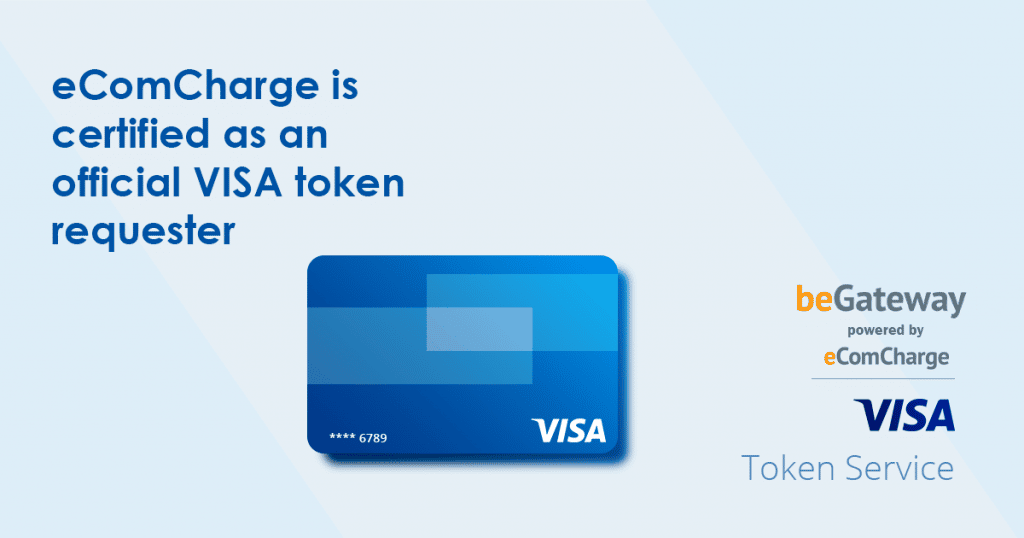On October 5, 2021, eComCharge successfully completed certification and acquired the status of a Visa token requestor in CEMEA. Since May 2020, eComCharge has officially been a member of the global Visa Digital Enablement Program (VDEP).

Payment service providers who lease the beGateway payment platform are already able to use the global token from Visa when working with acquiring banks that participate in the Visa Digital Enablement Program (VDEP).
Thanks to Visa tokenization, payment service providers and acquiring banks can no longer store customer card data, but use a global token from Visa to receive payments. Buyers’ card numbers will only be stored by Visa and the issuing bank. This measure significantly reduces the risk of card data interception and makes it way harder for intruders to compromise card data in general.
The advantages for tenants of the beGateway white label payment platform are obvious:
1. There will be fewer transaction cancellations due to an invalid card number.
Payment service providers will be able to get a new token for a replacement card after the previous card expires. All you have to do is use the existing Visa token with a cryptogram in the request for fund debiting, and Visa will automatically send and use the token corresponding to the replacement card. As a result, the money for the transaction will be debited from the buyer’s new card, and the payment service provider will have a new global token that corresponds to it.
2. The consequences will be less severe if the system is hacked since the attackers do not have access to the actual card numbers.
- The Visa card number is now used only at the stage of communication between the Visa payment system and the issuing bank.
- When the payment goes from the merchant to the beGateway-based leased system for online payments receiving and processing, a payment gateway token is used that the payment service provider issues to the merchant when accepting the first payment from this buyer.
- Anywhere else on the payment path – from the beGateway system to the acquiring bank and from the acquiring bank to Visa – the Visa global token and a unique cryptogram for each transaction are used.
3. The payment service provider might have to pay less for the infrastructure for the secure storage of card data and PCI DSS compliance. This is especially true for our clients who want to buy a licensed copy of the software.
4. It is easier to transfer subscriptions and recurrent merchant payments from one acquiring bank to another.
Usually, without the global tokens from Visa, when transferring subscriptions and recurring payments from one acquiring bank to another, the merchant is faced with a choice: either to ask their customers to re-bind the card with the new acquirer, which entails repeated verification of the transaction using the 3ds protocol, or to arrange with the new bank to consider the payments recurrent, without first checking the cardholders using 3ds.
5. With global tokens from Visa, the merchant’s payment service provider simply sends a transaction request for a global token along with a sign of recurrence to the new acquirer, and that’s it.
It is easier and safer to make recurrent payments by sending the acquirer only a Visa token and a sign of a recurrent transaction.
6. At the time of payment, the buyer will see the image of their card.
Visa requires all issuing banks to provide graphic designs for their cards. These images are automatically transmitted to the payment service provider at the time of receiving a payment.